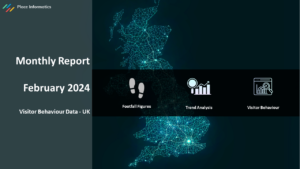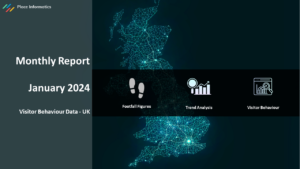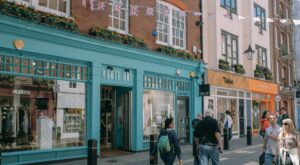Tourist attractions are so important to the UK’s economy, generating £100.8 billion a year and supporting thousands of jobs, businesses and sectors, including transport, retail, leisure, green spaces, museums and the arts.
Domestic tourism (refers to both local and national tourists) in particular acts as a key driver for town and city planners towards improving an area’s infrastructure and amenities, preserving local heritage and culture, increasing investment into commercialisation (hotels, restaurants etc.), events and green spaces, as well as providing plenty of opportunities for employment and educational growth.
Moreover, domestic tourism is vital in helping governing bodies to track seasonality changes, visitor numbers and the type of tourist activity within their core catchment region. For example, local visitor footfall may be higher or lower during the school holidays and local tourists are more likely to visit an attraction multiple times on an annual basis because they live within a short distance. This knowledge of local visitor behaviour can have big benefits for businesses to gain insights into their regular regular customers. Meanwhile, national visitor footfall patterns change during long weekends or public holidays, with national tourists expected to stay overnight to visit for a one-off occasion and spend more.
These differences can dramatically affect how tourist attractions are managed. By understanding local, regional and national visitor behaviour data, tourism organisations can make informed decisions about how to best invest their resources and avoid common hazards such as overcrowding, congestion, environmental damage via pollution, or in extreme cases loss of natural habitat for green areas.
With access to the latest visitor behaviour data insights from Place Informatics, you have visitor data at your fingertips to create informed targeted initiatives to improve tourist visitation and ensure that everyone has a positive experience. Listed below are four key features of our TourismUK.AI. footfall data dashboards to help maximise your tourist attraction.
- Visitor Demographics – categorise your local, regional & national visitors and their postcode origins, including a socio-economic breakdown of AB, C1, C2, D, E profiles to determine where to target new prospects.
- Footfall predictions – measure busiest time of day, length of stay and visit frequency in surrounding tourist areas to organise events, identify commercial opportunities for vendors, optimise accommodation and implement new initiatives such as travel and parking schemes, discounts or free entry days and VIP experiences.
- Performance analysis – compare local, regional and national visitor footfall year on year using heatmaps and graphs which show the most popular hotspots, access points and travel routes for tourists, including how midweek days compare to weekend visitors.
- Benchmarking – Compare your tourist area’s performance against others across the UK to compare and contrast or measure the results of your interventions with comparable or neighbouring tourist destinations.
Get access to tourism footfall and visitor behaviour data
See the different ways that local and national visitors impact your tourist area or Heritage Action Zone by calling 0161 706 1343 for more information, or book a webinar of the data available for your area in Calendly here:






